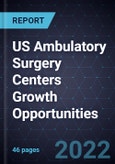The shift of surgery volumes from inpatient to outpatient has been ongoing for a while, owing to lower costs. While several procedures are done in outpatient settings, public and private payers in the US push for ambulatory surgery centers (ASCs) to conduct these procedures in outpatient settings than in hospital outpatient departments (HOPDs), as HOPDs get reimbursed higher than ASCs. While payers have the incentive to reduce costs by pushing procedures to ASCs, the move benefits patients, who see lower co-pays and costs for their surgeries in the ASC setting. These driving forces are inviting private equity capital to infuse money in outpatient setting surgery centers while pushing hospitals to either develop their ASCs, partner with ASCs, or acquire them. The largest ASC chains in the US are expanding by developing new ASCs across the country.Future Growth Potential of Ambulatory Surgery Centers Increases Opportunities for Medtech
As more volume of procedures moves to the ASC setting (at more than 20% in the next few years, per some estimates), there are several considerations for medtech companies (and for other healthcare stakeholders). From customized device portfolios for ASCs as the customer to developing partnerships with them, there are various ways that medtech companies will need to change their approach to succeed. While each clinical specialty will show varying nuances in the extent of the shift to outpatient and the share of ASCs (against HOPDs, or physician offices), ASCs will still be an important, hard-to-ignore customer segment in the coming years. Medtech companies need strategizing to serve it, and the insights covered in this study will help identify the right approach and the growth opportunities in this emerging segment.
Table of Contents
1. Strategic Imperatives
2. Market Overview
3. Specialty Insights
4. Trends Impacting Growth of ASCs
5. Insights for Medtech Companies to Serve ASCs
6. Growth Opportunity Universe, US Ambulatory Surgical Centers








